From Fiddleheads to Fronds
The story of ferns
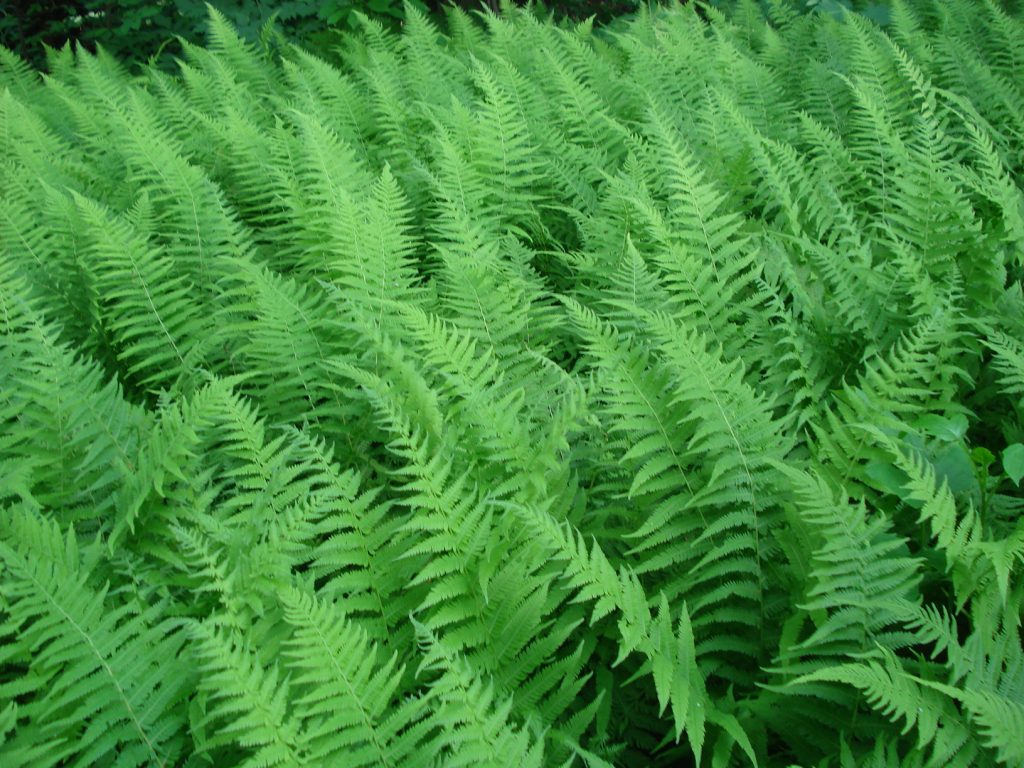
Stepping into the forest, you’ll find ferns are often the first to greet you. Whether illuminated by dappled sunlight filtering through the canopy or shimmering with fresh raindrops, ferns inhabit the hush of the understory. Resilient and graceful, they rise from the shaded forest floor, mossy logs and even rocky slopes, gradually unfurling from curled fiddleheads.
Along shaded trails across southeastern Pennsylvania, including at Jenkins Arboretum & Gardens, ferns anchor the understory with their story of persistence. These ancient plants have been part of our Earth’s history for more than 350 million years. Survivors of mass extinction events, witnesses to evolution and architects of forested ecosystems, ferns invite us to walk among them and brush against deep time.
Ferns’ History
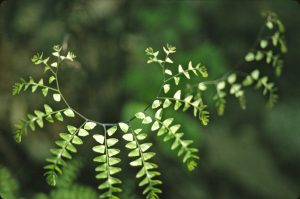
Predating both flowering plants (known as angiosperms) and modern trees, ferns are among the oldest plant groups on Earth. Fossil records trace their lineage back to the middle Devonian epoch — about 380 million years ago. These ancient ferns looked somewhat different back then, ranging from small and bush-like to large tree ferns.
What we recognize as modern ferns appeared during the Cretaceous period, during the age of dinosaurs, only about 70 million years ago. The long evolutionary history of ferns is a testament to their resilience. Ferns have survived at least four of the five mass extinction events, including the asteroid impact that killed the dinosaurs.
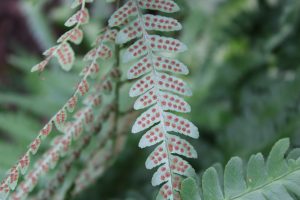
Ferns are known as pteridophytes, from the Greek terms for feather (pteron) and plant (phyton). These are vascular plants — meaning plants with specialized tissue for transporting water and minerals (xylem and phloem).
And, unlike flowering plants, ferns reproduce with spores. Structures called sporangia are filled with spores and can often be found on the underside of fern fronds. When the spores are released, they develop into a small form, where sexual reproduction then takes place.
Ferns in the Forest
Despite being a tasty snack for some dinosaurs, ferns are not a popular food source for most modern animals. However, the diversity of ferns allows them to contribute a variety of other benefits to their ecosystems. Plant debris from ferns improves soil quality, as it increases nutrients in the soil. As ferns grow, they also maintain consistent moisture levels, further enhancing soil health.
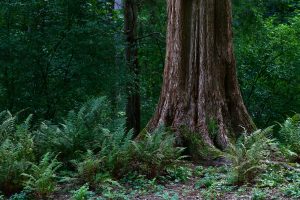
In addition to providing many ecological advantages, ferns are also indicators that provide valuable insight into the health of an ecosystem. Because ferns are sensitive to changes in environmental conditions, such as light and pollution, their presence or absence can reveal signs of environmental stress and change. These qualities are seen more clearly in ferns growing in their native range.
Often overlooked, ferns are ecologically indispensable. Native ferns support biodiversity, providing crucial habitat and shelter for insects, amphibians and small mammals. Ferns’ structure provides foraging space for ground-feeding birds, such as the American robin. Amphibians and reptiles, including frogs, turtles and salamanders, often use ferns as shelter, since their fronds provide a great hiding spot.
Native Ferns
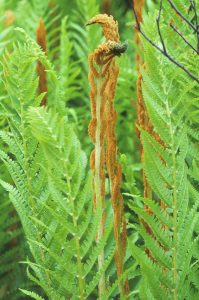
Many native ferns are strongly intertwined with the life cycles of native wildlife. One of the most recognizable native ferns in our region is the cinnamon fern (Osmundastrum cinnamomeum), which is easily identified by its spore-bearing fronds that turn brown in the spring, resembling sticks of cinnamon. Cinnamon ferns’ fiddleheads are covered in fuzz used for the plant’s own protection and are also used by birds as material for nests.
Another common species native to Pennsylvania is the Christmas fern (Polystichum acrostichoides). This fern is evergreen, even through Christmas, giving it its name. Some people even say the leaflets of the Christmas fern look like stockings. In the winter, this fern’s fronds droop low against the forest floor, which, along with fallen leaves, create habitat for leaf-dwelling critters such as beetles and salamanders.
These are just two examples of the many benefits native ferns can provide for the forest and your garden. Embracing native ferns not only enhances natural beauty but also sustains wildlife and strengthens the ecosystem. By conserving and cultivating these resilient species and supporting local gardens, we can become part of a broader conservation effort, nurturing both the landscape and biodiversity.
Ferns’ Legacy
Ferns are living echoes of landscapes that existed hundreds of millions of years before us. Next time you find yourself meandering through a forest or wandering through a garden, pause to appreciate the subtle beauty of a delicate, yet resilient, fern frond. Look a little closer, and you might notice these silent storytellers standing witness to Earth’s ancient past.
Jenkins Arboretum & Gardens is a 48-acre public garden showcasing native flora of the eastern United States and a world-class collection of rhododendrons and azaleas. The member-supported gardens are open every day of the year and always with free admission. Plan your visit by visiting the website, JenkinsArboretum.org.
Our Favorite Resources
- B&D Builders
- Ball & Ball
- Berk Hathaway Holly Gross
- Berk Hathaway Kit Anstey
- Berk Hathaway M. Schwartz
- Canvas Valley Forge
- Dewson Construction
- DiSabatino Landscaping
- King Construction
- McComsey Builders
- Monument/Sotheby’s Int’l
- Mostardi Nursery
- Mountaintop Construction
- Renewal Dynamics
- Sheller Energy
- White Horse Construction
